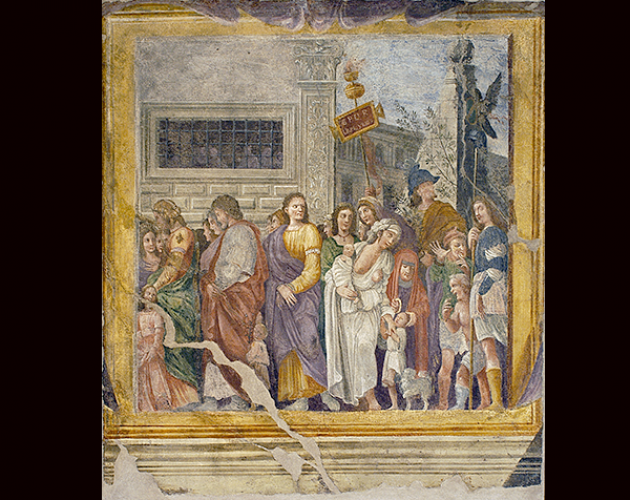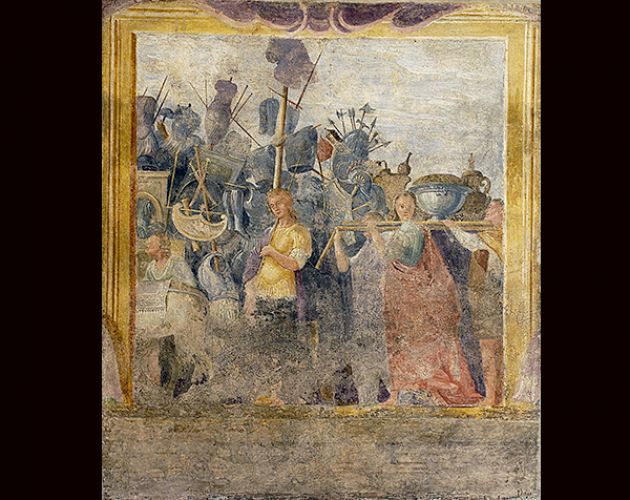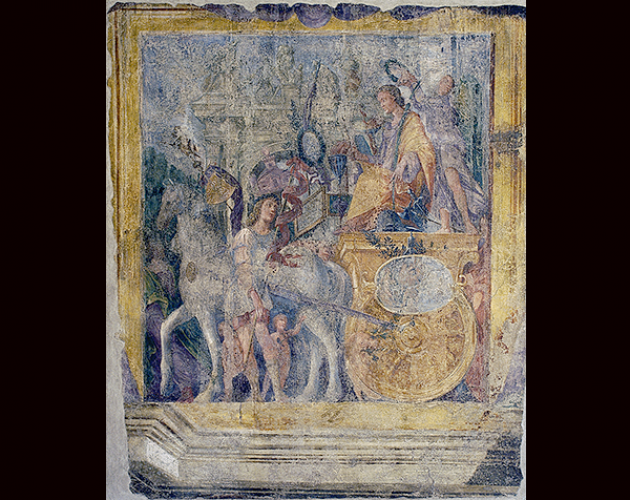The frescoes in this small room were made to decorate the private palazzo of a distinguished noble family of Mantua, the Petrozzani. Although smaller in size and created using a different technique, the frescoes are truthful copies of the nine large tempera paintings made for the Gonzaga between 1486 and 1492 by Andrea Mantegna and known as the Triumphs of Caesar.
One of Mantegna’s masterpieces and the high point of the Gonzaga collections, the cycle represents the magnificent triumphal procession of Julius Caesar after his victory over Gaul. Francesco II Gonzaga had the large room on the first floor (Room of the Triumphs) specially built since no room in the whole of Mantua was large enough to display all the paintings together. In 1627 financial difficulties forced the Gonzaga to sell the paintings to Charles I of England, and nowadays they are at Hampton Court, London.
All the nine faithfully copied frescoes can be attributed to Ludovico Dondi (before 1585 – 1623), previously superintendent of the ducal collections under Vincenzo I Gonzaga. The fresco cycle was made at the end of the 16th century when the originals were still in Mantua, at Palazzo San Sebastiano. Although the power of Mantegna’s tour de force is missing, the artist who painted them saw and copied the originals first-hand, perhaps through the engravings of Andrea Andreani. Discovered in Palazzo Petrozzani in Mantua, the frescoes were detached from the walls in 1938-1939 using the strappo technique. They were then transferred to panels.






